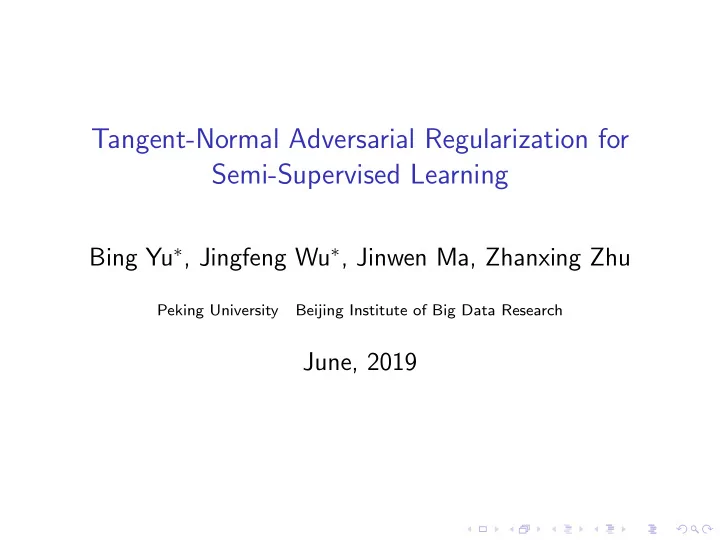

Tangent-Normal Adversarial Regularization for Semi-Supervised Learning Bing Yu ∗ , Jingfeng Wu ∗ , Jinwen Ma, Zhanxing Zhu Peking University Beijing Institute of Big Data Research June, 2019
Semi-supervised learning (SSL) ◮ Suppose we have insufficient amount of labeled data ( x l , y l ) and large amount of unlabeled data x ul ; ◮ How to learn a classifier fully utilizing the unlabeled data x ul ? One important approach: Manifold Regularization! The key motivation is that unlabeled data could help to identify a good data manifold.
Assumptions (informal) The manifold assumption The observed data x ∈ R D is almost concentrated on a low dimensional underlying manifold M ∼ = R d , d ≪ D . The noisy observation assumption The observed data can be decomposed as x = x 0 + n , where x 0 is exactly supported on the manifold M and n is some noise independent of x 0 . The semi-supervised learning assumption The true classifier, or the true condition distribution p ( y | X ) varies smoothly along the underlying manifold M .
Introduce TNAR: Tangent-Normal Adversarial Regularization Based on the assumptions, a good classifier for semi-supervised learning should be: ◮ Smooth along the underlying manifold M ; ◮ Robust to the off manifold noise n . To this end, we propose tangent-normal adversarial regularization (TNAR) .
Recommend
More recommend